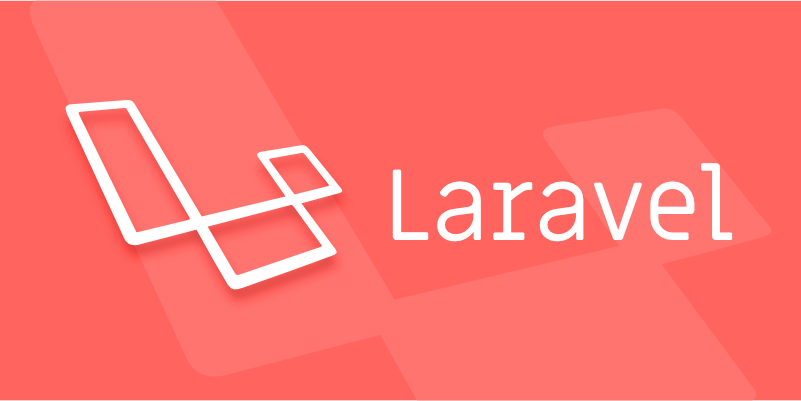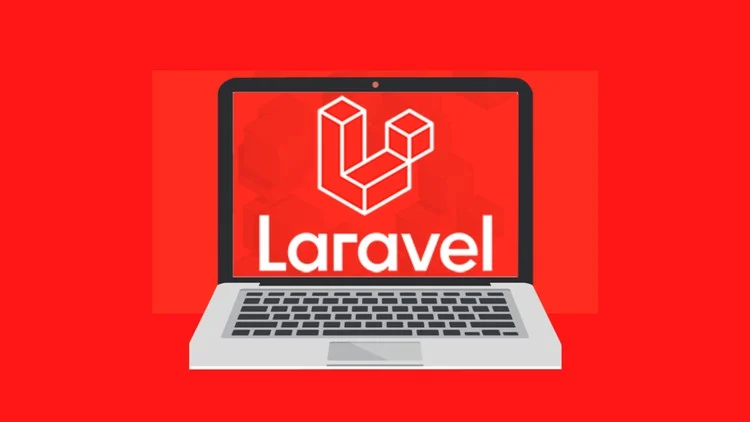How to build a REST API with Laravel?
Jul 30, 2025 am 03:41 AMCreate a new Laravel project and start the service; 2. Generate the model, migration and controller and run the migration; 3. Define the RESTful route in routes/api.php; 4. Implement the addition, deletion, modification and query method in PostController and return a JSON response; 5. Test the API functionality with Postman or curl; 6. Optionally add API authentication through Sanctum; finally obtain a clear structure, complete and extensible Laravel REST API suitable for practical applications.

Building a REST API with Laravel is straightforward thanks to its built-in features for routing, Eloquent ORM, and request handling. Here's a practical guide to help you create a clean, functional REST API using Laravel.

1. Set Up a New Laravel Project
Start by creating a new Laravel project using Composer:
composer create-project laravel/laravel api-demo cd api-demo
Then, start the development server to confirm everything works:

php artisan serve
You should see the Laravel welcome page at http://localhost:8000 .
2. Create a Model, Migration, and Controller
Let's build a simple API for managing posts . Use the make:model command with the -a flag to generate a model, migration, factory, and controller:

php artisan make:model Post -a
This creates:
-
app/Models/Post.php– the Eloquent model -
database/migrations/xxxx_create_posts_table.php– the migration -
app/Http/Controllers/PostController.php– the controller -
database/factories/PostFactory.php– for seeing
Edit the migration file to define the post fields:
// in database/migrations/..._create_posts_table.php
Schema::create('posts', function (Blueprint $table) {
$table->id();
$table->string('title');
$table->text('body');
$table->timestamps();
});Run the migration:
php artisan migrate
3. Define API Routes
Open routes/api.php and define RESTful routes using Route::apiResource() :
use App\Http\Controllers\PostController; Route::apiResource('posts', PostController::class);
These routes automatically map to standard REST actions:
-
GET /api/posts→ index -
POST /api/posts→ store -
GET /api/posts/{id}→ show -
PUT/PATCH /api/posts/{id}→ update -
DELETE /api/posts/{id}→ destroy
You can view all routes with:
php artisan route:list --path=api
4. Implement the Controller Methods
Open app/Http/Controllers/PostController.php and fill in the logic using Eloquent.
use App\Models\Post;
use Illuminate\Http\Request;
class PostController extends Controller
{
public function index()
{
return response()->json(Post::all());
}
public function store(Request $request)
{
$validated = $request->validate([
'title' => 'required|string|max:255',
'body' => 'required|string',
]);
$post = Post::create($validated);
return response()->json($post, 201);
}
public function show($id)
{
$post = Post::find($id);
if (!$post) {
return response()->json(['message' => 'Post not found'], 404);
}
return response()->json($post);
}
public function update(Request $request, $id)
{
$post = Post::find($id);
if (!$post) {
return response()->json(['message' => 'Post not found'], 404);
}
$validated = $request->validate([
'title' => 'required|string|max:255',
'body' => 'required|string',
]);
$post->update($validated);
return response()->json($post);
}
public function destroy($id)
{
$post = Post::find($id);
if (!$post) {
return response()->json(['message' => 'Post not found'], 404);
}
$post->delete();
return response()->json(['message' => 'Post deleted']);
}
}? Laravel automatically returns JSON responses when you pass data to
response()->json(). Also, API routes are already protected by CSRF evidence and use theapimiddleware (stateless).
5. Test the API
Use a tool like Postman , curl , or Thunder Client (VS Code) to test your endpoints.
Example: Create a post with curl
curl -X POST http://localhost:8000/api/posts \
-H "Content-Type: application/json" \
-d '{"title":"My First Post", "body":"This is the body"}' You should get a JSON response with the created post and a 201 status.
6. (Optional) Add API Authentication with Sanctum
For protected routes, use Laravel Sanctum to add token-based authentication.
Install Sanctum:
composer requires laravel/sanctum php artisan vendor:publish --provider="Laravel\Sanctum\SanctumServiceProvider" php artisan migrate
Add the Sanctum middleware in app/Http/Kernel.php under 'api' :
'api' => [
\Laravel\Sanctum\Http\Middleware\EnsureFrontendRequestsAreStateful::class,
'throttle:api',
\Illuminate\Routing\Middleware\SubstituteBindings::class,
],Protect your routes:
Route::middleware('auth:sanctum')->apiResource('posts', PostController::class);
Now users must authenticate with a token to access the API.
Final Notes
- Keep validation logic clean—consider using Form Requests for complex rules.
- Use API Resources (
php artisan make:resource PostResource) to format responses. - Always handle errors gracefully (eg, 404, 422).
- Use versioning (eg,
/api/v1/posts) for long-term stability.
That's it. You now have a fully functioning REST API with Laravel. It's clean, scalable, and ready for real-world use.
The above is the detailed content of How to build a REST API with Laravel?. For more information, please follow other related articles on the PHP Chinese website!

Hot AI Tools

Undress AI Tool
Undress images for free

Undresser.AI Undress
AI-powered app for creating realistic nude photos

AI Clothes Remover
Online AI tool for removing clothes from photos.

Clothoff.io
AI clothes remover

Video Face Swap
Swap faces in any video effortlessly with our completely free AI face swap tool!

Hot Article

Hot Tools

Notepad++7.3.1
Easy-to-use and free code editor

SublimeText3 Chinese version
Chinese version, very easy to use

Zend Studio 13.0.1
Powerful PHP integrated development environment

Dreamweaver CS6
Visual web development tools

SublimeText3 Mac version
God-level code editing software (SublimeText3)

Hot Topics
 How to use PHP to develop a Q&A community platform Detailed explanation of PHP interactive community monetization model
Jul 23, 2025 pm 07:21 PM
How to use PHP to develop a Q&A community platform Detailed explanation of PHP interactive community monetization model
Jul 23, 2025 pm 07:21 PM
1. The first choice for the Laravel MySQL Vue/React combination in the PHP development question and answer community is the first choice for Laravel MySQL Vue/React combination, due to its maturity in the ecosystem and high development efficiency; 2. High performance requires dependence on cache (Redis), database optimization, CDN and asynchronous queues; 3. Security must be done with input filtering, CSRF protection, HTTPS, password encryption and permission control; 4. Money optional advertising, member subscription, rewards, commissions, knowledge payment and other models, the core is to match community tone and user needs.
 Guide to matching Laravel routing parameter passing and controller method
Jul 23, 2025 pm 07:24 PM
Guide to matching Laravel routing parameter passing and controller method
Jul 23, 2025 pm 07:24 PM
This article aims to resolve common errors in the Laravel framework where routing parameter passing matches controller methods. We will explain in detail why writing parameters directly to the controller method name in the routing definition will result in an error of "the method does not exist", and provide the correct routing definition syntax to ensure that the controller can correctly receive and process routing parameters. In addition, the article will explore best practices for using HTTPDELETE methods in deletion operations.
 Data_get practice for dynamic access to model association properties in Laravel Livewire
Jul 23, 2025 pm 06:51 PM
Data_get practice for dynamic access to model association properties in Laravel Livewire
Jul 23, 2025 pm 06:51 PM
This article aims to solve how to efficiently and securely access deep properties associated with model through string paths when dynamically rendering data in LaravelLivewire components. When you need to obtain specific fields of the associated model based on a configuration string (such as "user.name"), access using object properties will fail. The article will introduce Laravel's data_get helper function in detail and provide code examples to show how to use it to solve this problem gracefully and ensure the flexibility and robustness of data acquisition.
 How to develop AI intelligent form system with PHP PHP intelligent form design and analysis
Jul 25, 2025 pm 05:54 PM
How to develop AI intelligent form system with PHP PHP intelligent form design and analysis
Jul 25, 2025 pm 05:54 PM
When choosing a suitable PHP framework, you need to consider comprehensively according to project needs: Laravel is suitable for rapid development and provides EloquentORM and Blade template engines, which are convenient for database operation and dynamic form rendering; Symfony is more flexible and suitable for complex systems; CodeIgniter is lightweight and suitable for simple applications with high performance requirements. 2. To ensure the accuracy of AI models, we need to start with high-quality data training, reasonable selection of evaluation indicators (such as accuracy, recall, F1 value), regular performance evaluation and model tuning, and ensure code quality through unit testing and integration testing, while continuously monitoring the input data to prevent data drift. 3. Many measures are required to protect user privacy: encrypt and store sensitive data (such as AES
 How to set environment variables in PHP environment Description of adding PHP running environment variables
Jul 25, 2025 pm 08:33 PM
How to set environment variables in PHP environment Description of adding PHP running environment variables
Jul 25, 2025 pm 08:33 PM
There are three main ways to set environment variables in PHP: 1. Global configuration through php.ini; 2. Passed through a web server (such as SetEnv of Apache or fastcgi_param of Nginx); 3. Use putenv() function in PHP scripts. Among them, php.ini is suitable for global and infrequently changing configurations, web server configuration is suitable for scenarios that need to be isolated, and putenv() is suitable for temporary variables. Persistence policies include configuration files (such as php.ini or web server configuration), .env files are loaded with dotenv library, and dynamic injection of variables in CI/CD processes. Security management sensitive information should be avoided hard-coded, and it is recommended to use.en
 How to make PHP container support automatic construction? Continuously integrated CI configuration method of PHP environment
Jul 25, 2025 pm 08:54 PM
How to make PHP container support automatic construction? Continuously integrated CI configuration method of PHP environment
Jul 25, 2025 pm 08:54 PM
To enable PHP containers to support automatic construction, the core lies in configuring the continuous integration (CI) process. 1. Use Dockerfile to define the PHP environment, including basic image, extension installation, dependency management and permission settings; 2. Configure CI/CD tools such as GitLabCI, and define the build, test and deployment stages through the .gitlab-ci.yml file to achieve automatic construction, testing and deployment; 3. Integrate test frameworks such as PHPUnit to ensure that tests are automatically run after code changes; 4. Use automated deployment strategies such as Kubernetes to define deployment configuration through the deployment.yaml file; 5. Optimize Dockerfile and adopt multi-stage construction
 Deep analysis of matching Laravel routing parameter transfer and controller method
Jul 23, 2025 pm 07:15 PM
Deep analysis of matching Laravel routing parameter transfer and controller method
Jul 23, 2025 pm 07:15 PM
This article deeply explores the correct transmission of routing parameters and the matching mechanism of controller methods in the Laravel framework. In response to the common "method does not exist" error caused by writing routing parameters directly to the controller method name, the article elaborates on the correct way to define routing, that is, declare parameters in the URI and receive them as independent parameters in the controller method. At the same time, the article also provides code examples and suggestions on best practices for HTTP methods, aiming to help developers build more robust and RESTful Laravel applications.
 Laravel routing parameter passing: correctly define the controller method and routing binding
Jul 23, 2025 pm 07:06 PM
Laravel routing parameter passing: correctly define the controller method and routing binding
Jul 23, 2025 pm 07:06 PM
This article discusses the correct posture of parameter transfer of controller method in Laravel routing in depth. In response to common errors caused by writing routing parameters directly to the controller method name, the correct routing definition syntax is explained in detail, and the mechanism of Laravel automatic parameter binding is emphasized. At the same time, the article recommends using HTTPDELETE method that is more in line with RESTful specifications to handle deletion operations to improve the maintainability and semantics of the application.






